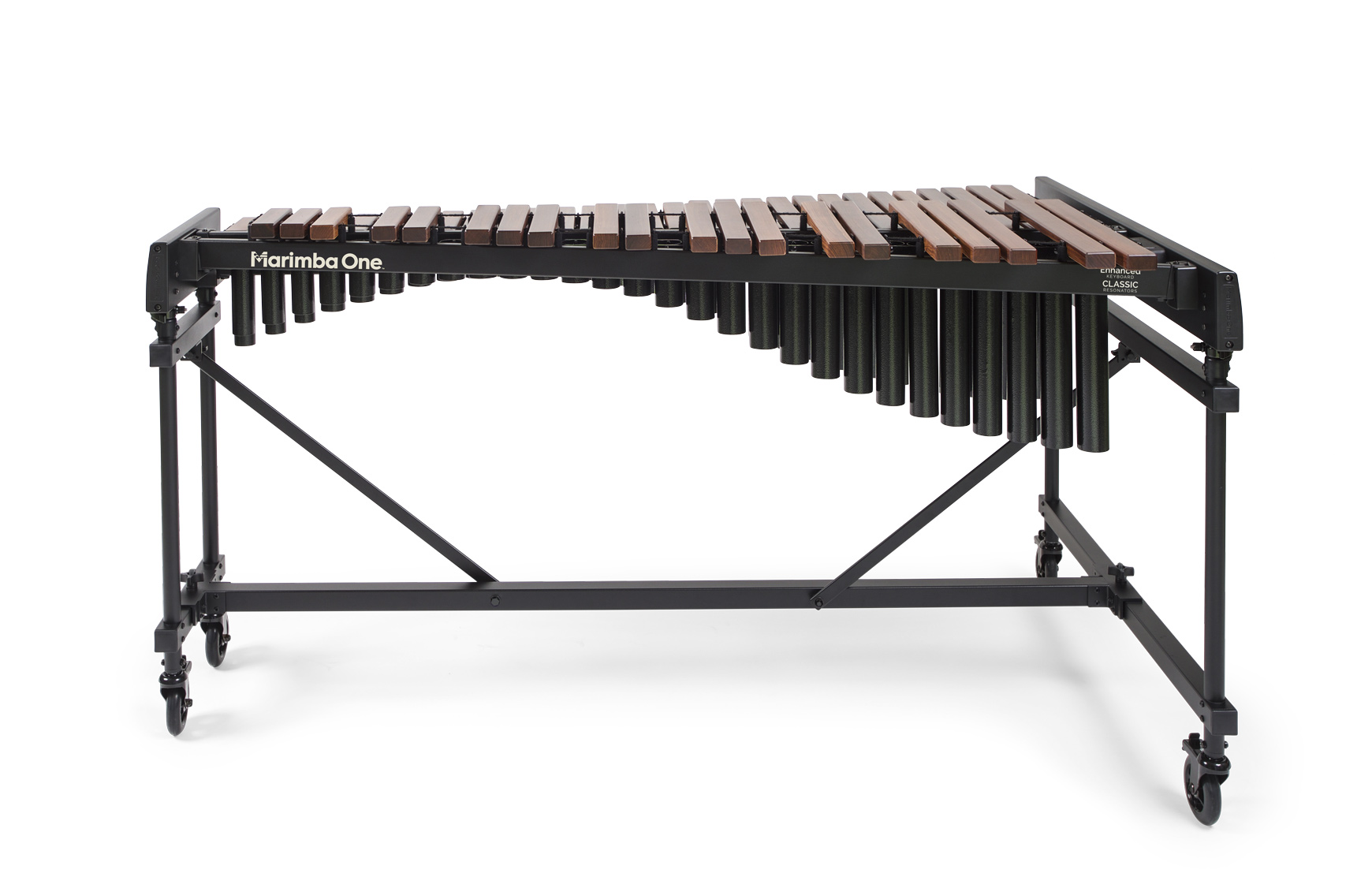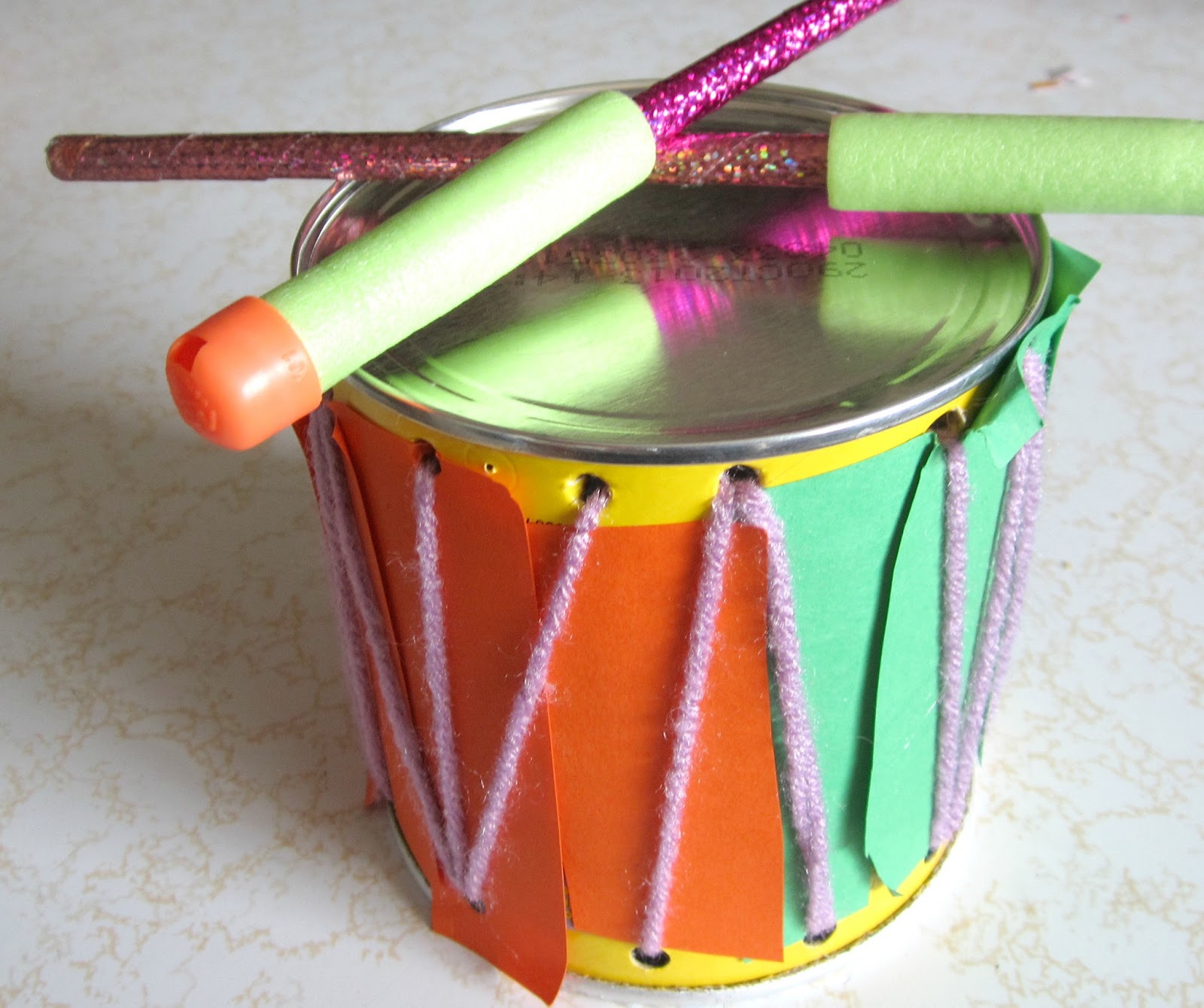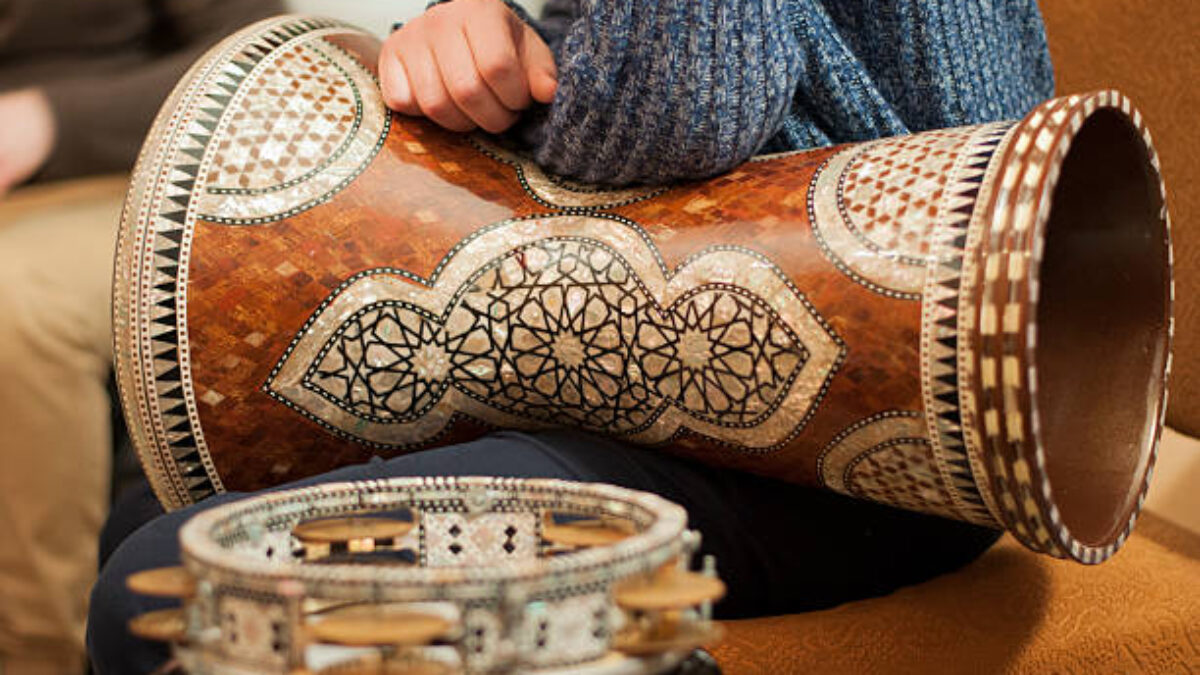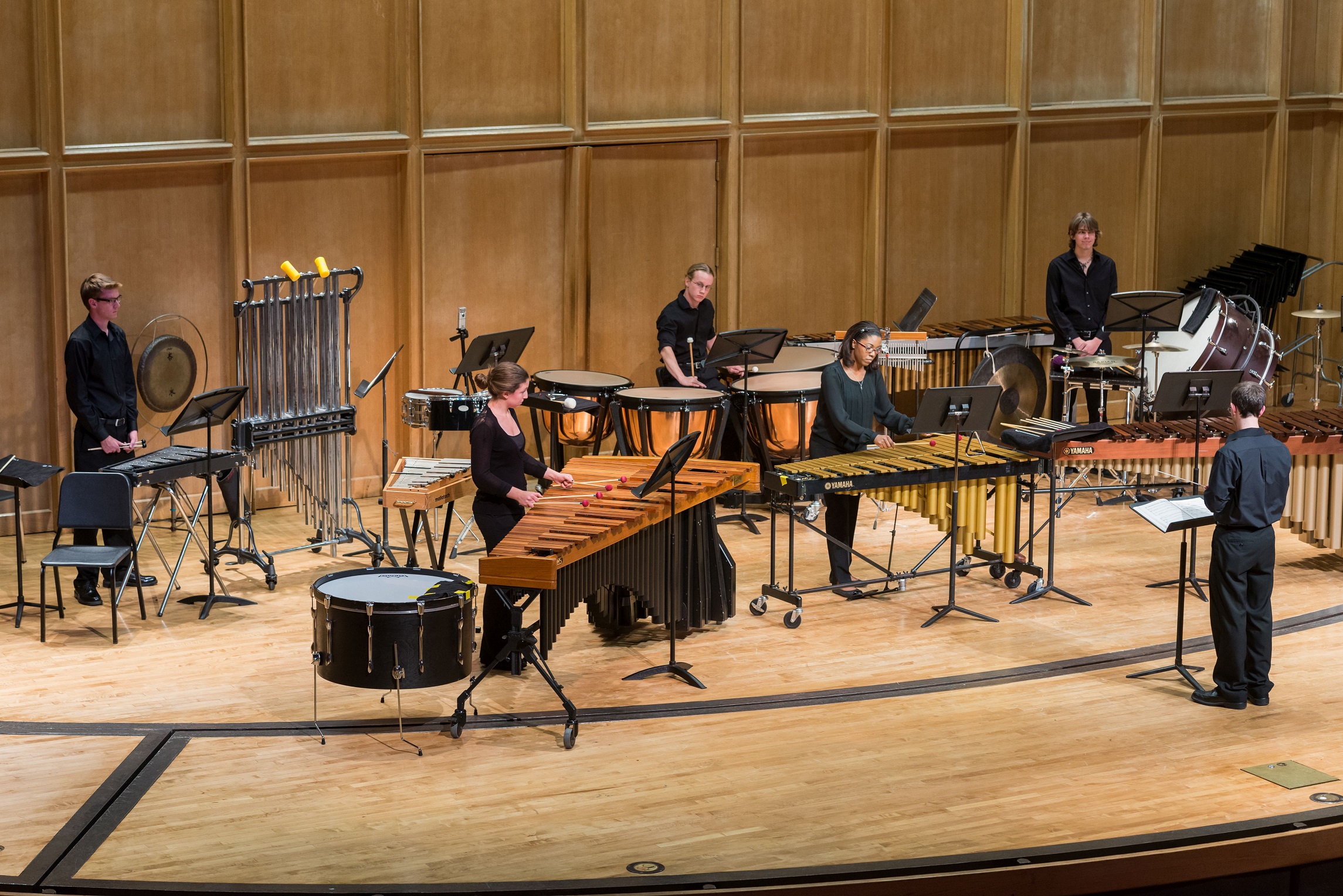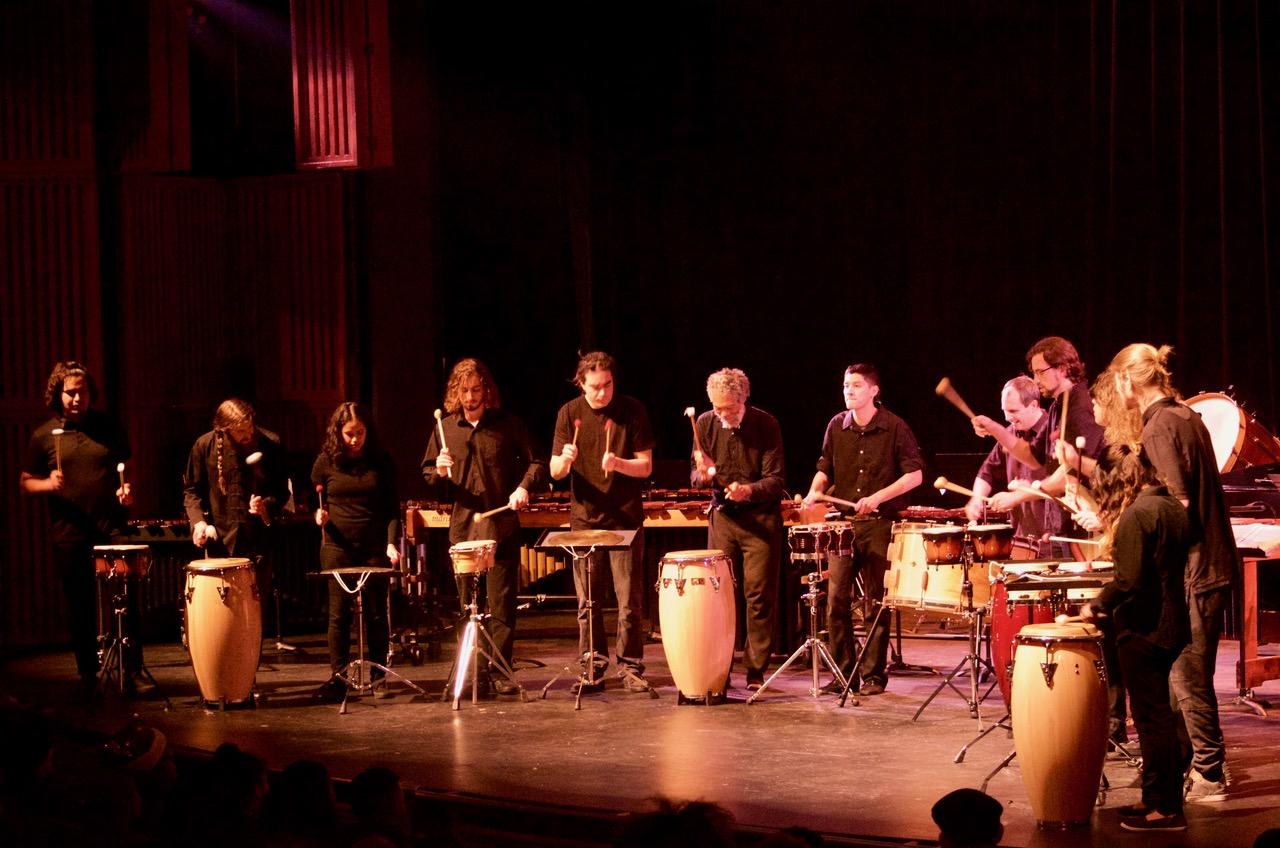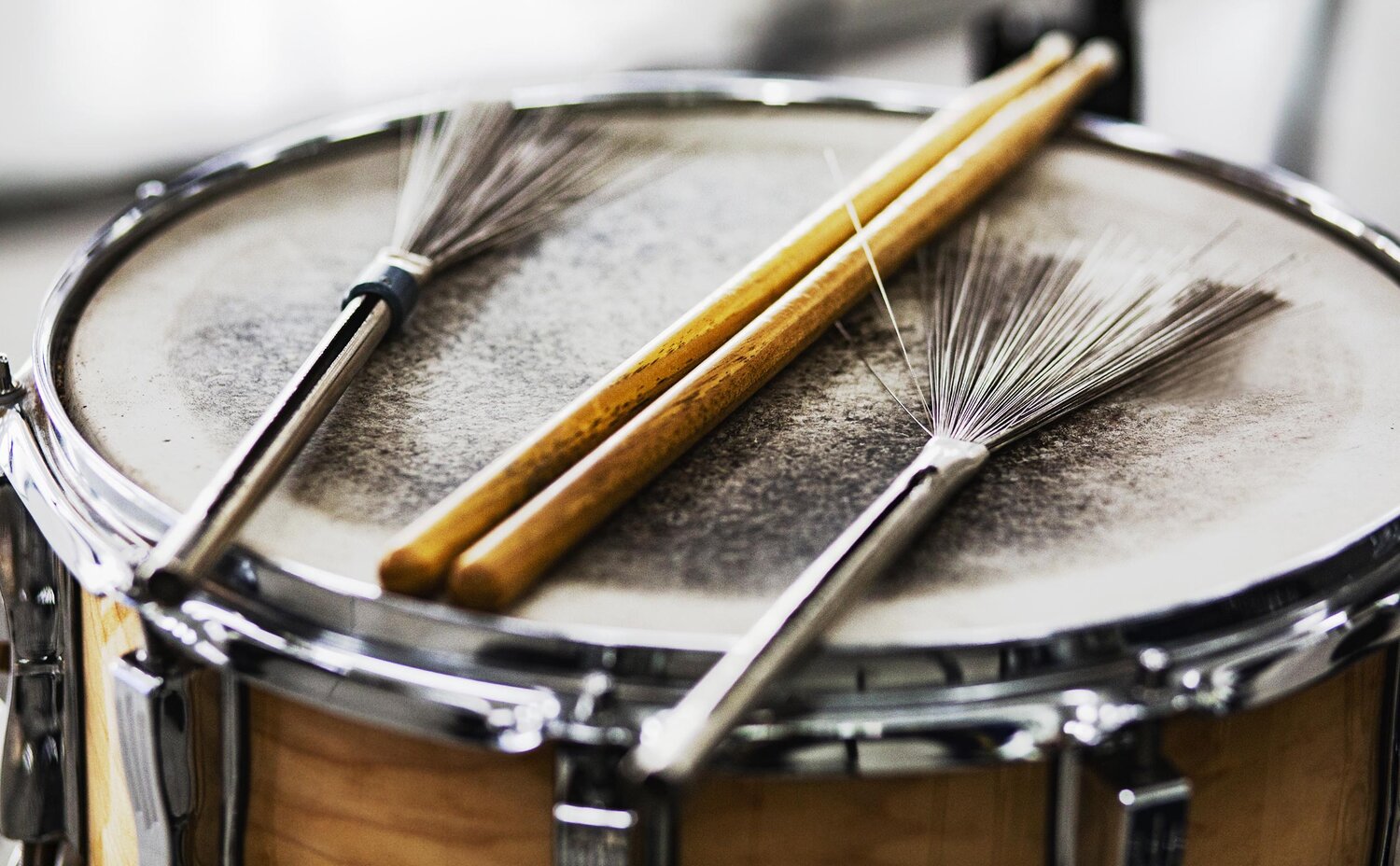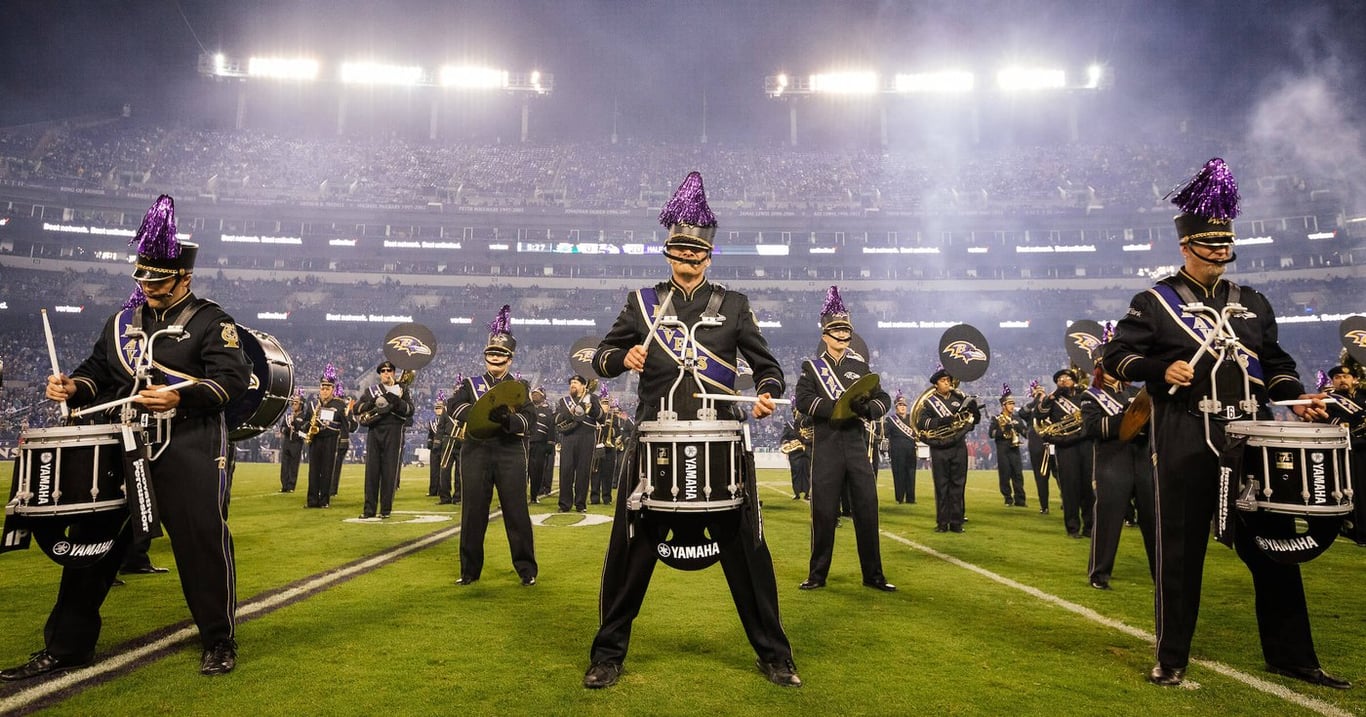Home>Instruments>Percussion Instruments>How Many Different Percussion Instruments Are There
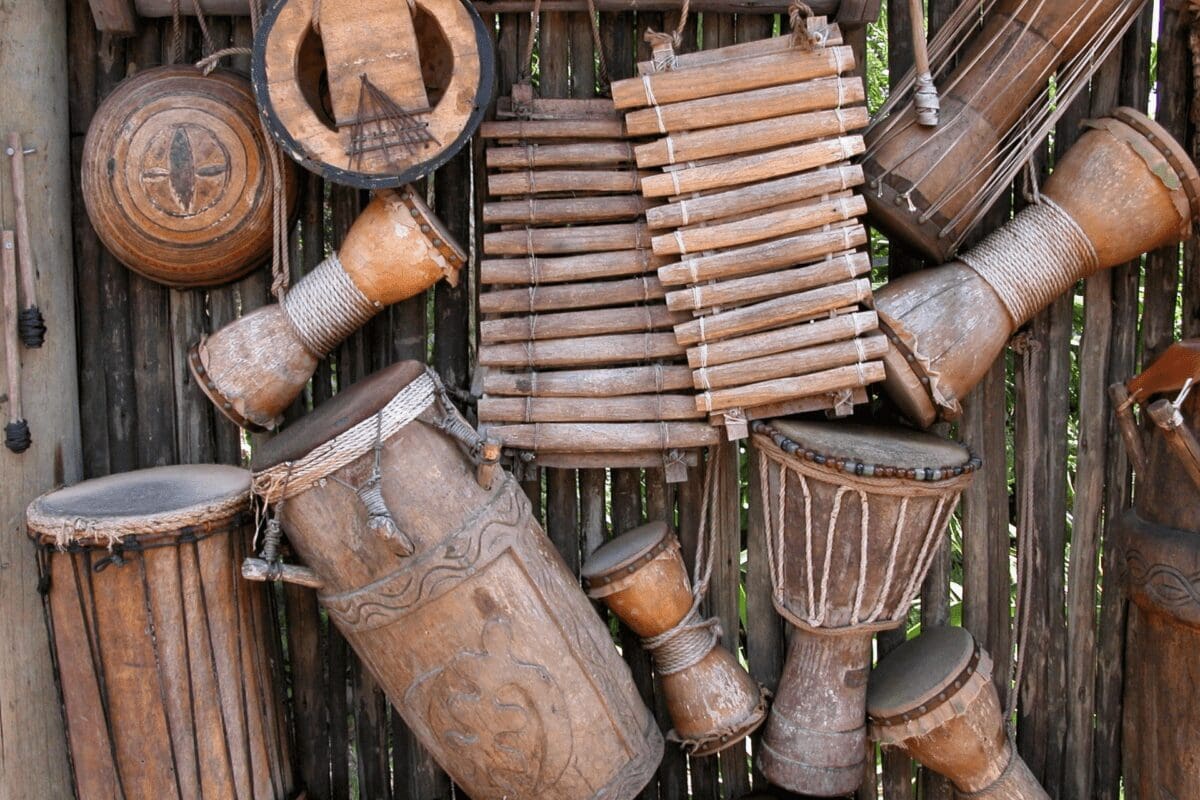

Percussion Instruments
How Many Different Percussion Instruments Are There
Modified: January 22, 2024
Discover the wide variety of percussion instruments available. From drums to xylophones, explore the world of percussion music and find your rhythm.
(Many of the links in this article redirect to a specific reviewed product. Your purchase of these products through affiliate links helps to generate commission for AudioLover.com, at no extra cost. Learn more)
Table of Contents
Introduction
Welcome to the fascinating world of percussion instruments. From the thunderous beats of drums to the delicate chimes of tambourines, percussion instruments play a crucial role in the world of music. The rhythmic patterns and sounds they produce add depth, energy, and texture to a wide range of musical compositions. Whether you are a seasoned musician, a music enthusiast, or simply curious about the diverse range of sounds and instruments available, this article will provide you with a comprehensive overview of percussion instruments.
Percussion instruments are one of the oldest and most widely used types of musical instruments across cultures. They can be found in various forms and sizes, ranging from small handheld instruments to large ensembles such as orchestral percussion sections. Percussion instruments produce sound through vibration or striking, and they are typically classified into four main categories: membranophones, idiophones, chordophones, and aerophones. While each category has its own unique characteristics, the focus of this article will primarily be on the membranophones and idiophones, as they are the most commonly recognized and used types of percussion instruments.
Throughout history, percussion instruments have played a vital role in cultural and religious ceremonies, celebrations, and musical performances. They have been used to communicate and convey emotions, set the rhythm for dancers, and create powerful musical arrangements. Today, percussion instruments are an integral part of various music genres, from classical and jazz to rock, pop, and world music. The wide range of sounds and versatility offered by percussion instruments makes them a cornerstone of musical composition and performance.
In the sections that follow, we will explore the different types of percussion instruments, including the common ones that are widely known and used, as well as the more traditional, ethnic, and even unusual percussion instruments that you may be less familiar with. Additionally, we will delve into the world of DIY percussion instruments, where creativity knows no bounds. Join us on this exciting journey through the percussion instrument universe!
Percussion Instruments Overview
Percussion instruments are a diverse family of musical instruments that produce sound through vibration or striking. They can be classified into various categories based on their construction, playing technique, and sound-producing elements. Percussion instruments also vary in size, shape, and range of pitch, offering a wide range of sonic possibilities.
Membranophones are percussion instruments that have a stretched membrane or drumhead on which the player strikes or taps to produce sound. Common examples include drums, such as the bass drum, snare drum, and tom-toms. These instruments produce sound by the vibration of the drumhead, which can be controlled by varying the tension or striking position.
Idiophones, on the other hand, produce sound through the body of the instrument itself. The entire instrument vibrates to create sound when struck, shaken, or rubbed. Examples of idiophones include cymbals, xylophones, marimbas, and tambourines. Each idiophone has a distinct construction and sound-producing mechanism, leading to a wide variety of timbres and tones.
Chordophones and aerophones are the other two categories of percussion instruments. Chordophones produce sound through vibrating strings, such as those found in the piano or harp. Aerophones, on the other hand, create sound through the vibration of air, including instruments like the organ or the pipe organ.
Percussion instruments play a fundamental role in music, providing rhythm, texture, and dynamics. They are often used to keep time and establish a pulse in musical compositions. In ensembles, percussion instruments help to create a cohesive sound and blend with other instruments. They also contribute to the overall atmosphere and mood of a musical piece, whether it be the driving beat of a rock song or the intricate rhythms of a Latin jazz performance.
Additionally, percussion instruments are often used to add color and effects to musical arrangements. From the shimmering crash of a cymbal to the subtle buzz of a shaker, percussion instruments can create a wide range of sounds and provide expressive accents.
Now that we have a general understanding of percussion instruments, let’s dive deeper into the different types and explore the world of common percussion instruments.
Common Percussion Instruments
When it comes to percussion instruments, there are several commonly played instruments that you may already be familiar with. These instruments can be found in a wide range of musical genres and are essential in creating rhythmic patterns and adding depth to compositions. Let’s explore some of the most common percussion instruments:
- Drums: Drums are perhaps the most well-known percussion instruments. They come in various sizes and types, including the bass drum, snare drum, tom-toms, and congas. Drums produce sound by striking or tapping a membrane-like drumhead. They provide the foundation of rhythm in many music styles and are often played with drumsticks or hands.
- Cymbals: Cymbals are metallic percussion instruments that produce a shimmering sound when struck together or with drumsticks. They can vary in size and thickness, resulting in different tonal qualities. Crash cymbals, ride cymbals, and hi-hats are commonly found in drum sets used in various genres, including rock, jazz, and orchestral music.
- Tambourine: The tambourine is a handheld percussion instrument consisting of a circular frame with metal jingles or zils attached. It is played by shaking, striking, or tapping the instrument to produce a jingling sound. The tambourine is often used in folk, pop, and world music to add a rhythmic and colorful element.
- Maracas: Maracas are traditional Latin American percussion instruments consisting of hollowed gourds filled with seeds or small beads. They are shaken to produce a rattling sound and are commonly used in Latin music and various other genres to add a lively and rhythmic texture.
- Triangle: The triangle is a metal percussion instrument shaped like a triangle. It is played by striking it with a metal beater. The triangle produces a distinct tinkling sound and is often used to add accents and shimmering effects in orchestral and band music.
- Bongos: Bongos are a pair of small, open-bottomed drums of different sizes attached to each other. Played with the hands, bongos produce rich, resonant tones. They are commonly used in Afro-Cuban and Latin American music and have also made their way into various other genres.
These are just a few examples of the many common percussion instruments found in music. Each instrument has its own unique characteristics and playing techniques, allowing musicians to create an array of rhythms, textures, and emotions. Whether you are a drummer or simply enjoy listening to percussion-driven music, these instruments play a crucial role in shaping the sound and feel of a composition.
Now that we have explored the common percussion instruments, let’s move on to discovering traditional percussion instruments from various cultures around the world.
Traditional Percussion Instruments
Traditional percussion instruments hold a special place in the music of different cultures around the world. They are deeply rooted in history, often carrying cultural and spiritual significance. These instruments have been passed down through generations, preserving ancient traditions and adding unique flavors to musical compositions. Let’s explore some traditional percussion instruments from various cultures:
- Tabla: The tabla is a pair of hand drums originating from India. It consists of two drums – the smaller, higher-pitched drum is called the tabla, while the larger, lower-pitched drum is called the bayan. Tabla drums are played with the fingers and palms, creating complex rhythms and melodic patterns. They are widely used in Indian classical music and have influenced various other genres globally.
- Taiko Drums: Taiko drums are large, barrel-shaped drums that originated in Japan. They were traditionally used in Japanese festivals and ceremonies to communicate messages, provide a sense of unity, and invoke spiritual energy. Taiko drumming has now become a popular performance art form both in Japan and internationally, characterized by powerful beats, synchronized movements, and dynamic performances.
- Djembe: The djembe is a goblet-shaped hand drum originating from West Africa. It is carved out of a single piece of wood and features a goat skin drumhead. Djembes are played with the hands, utilizing various techniques to produce different tones. They are known for their versatility and are used in various African music styles, as well as in fusion genres across the globe.
- Udu: The Udu is a clay pot drum that originated in Nigeria. It has a hollow body with an open hole on the side and is played by striking or tapping the body with the hands. The Udu produces a deep, resonant sound and is often used in traditional African music and contemporary genres as a percussion or melodic instrument.
- Taiko: Taiko is a style of drumming that originated in Japan and features large, barrel-shaped drums. Taiko performances involve powerful, synchronized movements, and intense rhythms that captivate audiences. The sound of Taiko drums resonates deep within the body and is often used to convey energy, strength, and emotion.
- Gamelan: Gamelan is an ensemble of traditional Indonesian percussion instruments, including metallophones, gongs, hand drums, and xylophones. The ensemble consists of numerous players who perform intricate rhythmic patterns together. Gamelan music is an integral part of Indonesian culture and is known for its hypnotic melodies and elaborate compositions.
These are just a few examples of the countless traditional percussion instruments found across the globe. Each instrument carries the rich heritage and cultural identity of its respective region, adding depth and distinctiveness to the music it accompanies. Learning about traditional percussion instruments provides a glimpse into the rich tapestry of global musical traditions and highlights the beauty of cultural diversity.
Next, we will delve into the world of ethnic percussion instruments, which bring the sounds of specific regions and cultures to life.
Ethnic Percussion Instruments
Within the realm of percussion instruments, there is an array of ethnic instruments that originate from specific regions and cultures. These instruments are deeply rooted in the traditions and musical practices of their respective ethnic groups, offering unique sounds and playing techniques. Let’s explore some of the fascinating ethnic percussion instruments from around the world:
- Bodhran: The bodhran is a traditional Irish frame drum. It has a wooden frame and a goatskin drumhead, which is played with a wooden beater called a tipper or a double-ended tipper called a cipín. The bodhran is an integral part of Irish traditional music and is known for its rhythmic patterns, providing a pulsating heartbeat to the music.
- Ghatam: The ghatam is a clay pot drum originating from South India. It is made of clay and has a narrow mouth and a wide body. The ghatam is played by striking different parts of the pot with the hands and fingers, producing a variety of tones. It is commonly used in South Indian classical music and adds a unique earthy element to the compositions.
- Cajon: The cajon is a box-shaped percussion instrument that originated in Peru. It is made of wood, typically with a thin wooden playing surface. The player sits on top of the cajon and plays it by striking different parts of the box with their hands, producing a range of tones and rhythms. The cajon has become popular in various genres, including flamenco, Latin, and pop music.
- Balafon: The balafon is a West African xylophone made of wooden bars placed over resonators. It is played by striking the bars with mallets, creating melodic patterns and complex rhythms. The balafon is widely used in West African traditional music and is known for its vibrant, resonant sound.
- Tabla Tarang: The tabla tarang is a set of tuned tabla drums used to play melodies in classical Indian music. It consists of several smaller tabla drums arranged horizontally and tuned to specific pitches. The tabla tarang is played with the hands and allows for intricate and melodious improvisation.
- Pandeiro: The pandeiro is a Brazilian tambourine-like instrument. It has a wooden frame with metal jingles and a synthetic drumhead. The pandeiro is played by striking the head with the hand and using the thumb to produce different tones. It is commonly used in various styles of Brazilian music, including samba, choro, and capoeira.
These ethnic percussion instruments provide a glimpse into the rich musical traditions of different cultures around the world. Each instrument carries its own unique sound, playing style, and cultural significance. Exploring ethnic percussion instruments allows us to appreciate the diverse musical heritage of various regions and enriches our understanding of global music.
Now, let’s delve into the realm of unusual percussion instruments that may surprise and captivate you.
Unusual Percussion Instruments
When it comes to percussion instruments, there are plenty of unconventional and lesser-known options that can add a touch of uniqueness and intrigue to musical compositions. These unusual percussion instruments often bring unexpected sounds and textures to the mix, standing out among more traditional instruments. Here are some examples of these intriguing percussion instruments:
- Hang Drum: The Hang drum, also known as the Hang or Handpan, is a relatively new instrument created in the early 2000s. It resembles a UFO-shaped steel drum with a series of indentations called “tone fields.” When struck with the hands, the Hang drum produces rich, resonant tones evoking a soothing and ethereal ambiance. This instrument has gained popularity in the fields of world music, fusion, and meditation genres.
- Glass Harmonica: The Glass Harmonica is an unusual percussion instrument that dates back to the 18th century. It consists of a series of glass bowls or goblets of different sizes mounted on an axis. The performer touches the edges of the rotating glass bowls with dampened fingers, creating haunting and ethereal harmonic tones. The Glass Harmonica has been used in classical compositions and is known for its unique and mesmerizing sound.
- Waterphone: The Waterphone is an eerie percussion instrument that consists of a metal resonator with metal rods of different lengths attached to it. It is played by bowing the rods or striking the sides of the resonator, causing the water inside to resonate and create haunting, ethereal sounds reminiscent of underwater or alien environments. The Waterphone has been featured in various film soundtracks and experimental music.
- Theremin: While not traditionally classified as a percussion instrument, the Theremin is an electronic instrument played by manipulating electromagnetic fields. It consists of two antennas – one for pitch and one for volume – and the performer uses their hands to control the proximity to these antennas, creating eerie, otherworldly sounds. The Theremin has been used in a wide range of genres, including classical music, film scores, and experimental electronic music.
- Singing Bowls: Singing bowls are a type of percussive instrument originating from the Himalayan region. These bowls, usually made of metal, produce a resonating sound when struck or rubbed with a mallet. The vibrations of the bowl create a meditative and calming effect, making them popular in sound healing, meditation, and spiritual practices. Each singing bowl produces a unique tone and vibration, adding a mystical element to musical compositions.
- Boomwhackers: Boomwhackers are colorful, tuned percussion tubes made from lightweight plastic. When struck or tapped against different surfaces, they produce different pitches, creating a vibrant and playful sound. Boomwhackers are commonly used in music education settings, as they are easy to play and create a visually engaging experience.
These unusual percussion instruments offer a distinct and unconventional playing experience, bringing new dimensions and sonic possibilities to musical compositions. They demonstrate the endless creativity and ingenuity of instrument makers and musicians alike.
Now, let’s explore the realm of DIY percussion instruments and the innovative ways people create their own unique sounds.
DIY Percussion Instruments
When it comes to percussion instruments, creativity knows no bounds. Many musicians and enthusiasts enjoy constructing their own instruments using everyday objects and materials, resulting in unique and personalized sounds. DIY percussion instruments offer a sense of experimentation, allowing individuals to explore their creative side while making music. Here are some examples of DIY percussion instruments:
- Trash Can Drum Set: A popular DIY percussion instrument is the trash can drum set. By repurposing empty metal or plastic trash cans and using drumsticks or even bare hands, you can create a makeshift drum set. The different-sized cans produce a variety of tones, providing a fun and cost-effective way to experiment with rhythm and percussion.
- Plastic Bottle Shakers: Plastic bottle shakers are a simple yet effective DIY percussion instrument. Empty plastic bottles can be filled with various materials, such as beans, rice, or beads, and sealed tightly. When shaken, these bottles produce a rhythmic and percussive sound, making them a great addition to jam sessions or homemade ensembles.
- Bucket Drums: Buckets can be transformed into drums by attaching a drumhead or stretching a thick plastic sheet across the opening. By striking the drumhead with hands or drumsticks, you can create a deep and resonant sound. The versatility and low cost of buckets make them a popular choice for DIY percussionists.
- Spoon Castanets: If you have a pair of metal spoons lying around, you can easily turn them into castanets. Hold one spoon in each hand, gripping the handles tightly. By clicking the spoons together, you can create a distinct percussive sound akin to castanets in flamenco music.
- PVC Pipe Drums: PVC pipes can be transformed into melodic percussion instruments. By cutting the pipes into different lengths and attaching caps on one end, you can create a range of pitches. When struck with mallets or drumsticks, the pipes produce musical tones, allowing you to create your own DIY pipe drum ensemble.
- Pringles Can Cajon: Empty Pringles cans can be repurposed to create a mini cajon-like drum. By placing a thin wooden board on the open end and tapping it with your hands or drumsticks, you can produce a snappy and percussive sound similar to a cajon.
DIY percussion instruments not only provide an avenue for musical expression without breaking the bank but also encourage resourcefulness and innovation. They demonstrate that music can be made from any object with a little creativity and imagination. So, gather some everyday items and let your DIY spirit elevate your percussion experience!
Now that we have explored DIY percussion instruments, let’s conclude our journey through the world of percussion instruments.
Conclusion
Throughout this journey, we have explored the captivating world of percussion instruments. From the commonly known drums and cymbals to the rich traditions of ethnic and traditional percussion instruments, and even the realm of unusual and DIY instruments, we have witnessed the wide range of sounds, rhythms, and textures that percussion instruments bring to the world of music.
Percussion instruments hold a vital role in music, providing rhythm, pulse, and dynamics. They enhance the overall musical experience, whether it be in a symphony orchestra, a jazz ensemble, or a rock band. From the primal beats of tribal ceremonies to the intricate patterns of classical compositions, percussion instruments create a foundation upon which musical compositions can flourish.
As we have discovered, the world of percussion instruments is rich and diverse, spanning various cultures, traditions, and creative possibilities. Whether it’s the remarkable craftsmanship of traditional instruments, the intriguing sounds of ethnic percussions, the unique tones of unusual instruments, or the imaginative allure of DIY creations, percussion instruments continue to captivate musicians and audiences alike.
So, whether you’re a seasoned percussionist or a curious music lover, don’t hesitate to explore the world of percussion instruments. Immerse yourself in the rhythmic vibrations, embrace the colorful tones, and let the beat of percussion instruments ignite your passion for music.
Remember, percussion instruments are not just about hitting or striking; they are about creating a language of rhythm and expression. So let the beats resound, the vibrations reverberate, and the melodies emerge as you embark on your own musical journey with the captivating world of percussion instruments.

